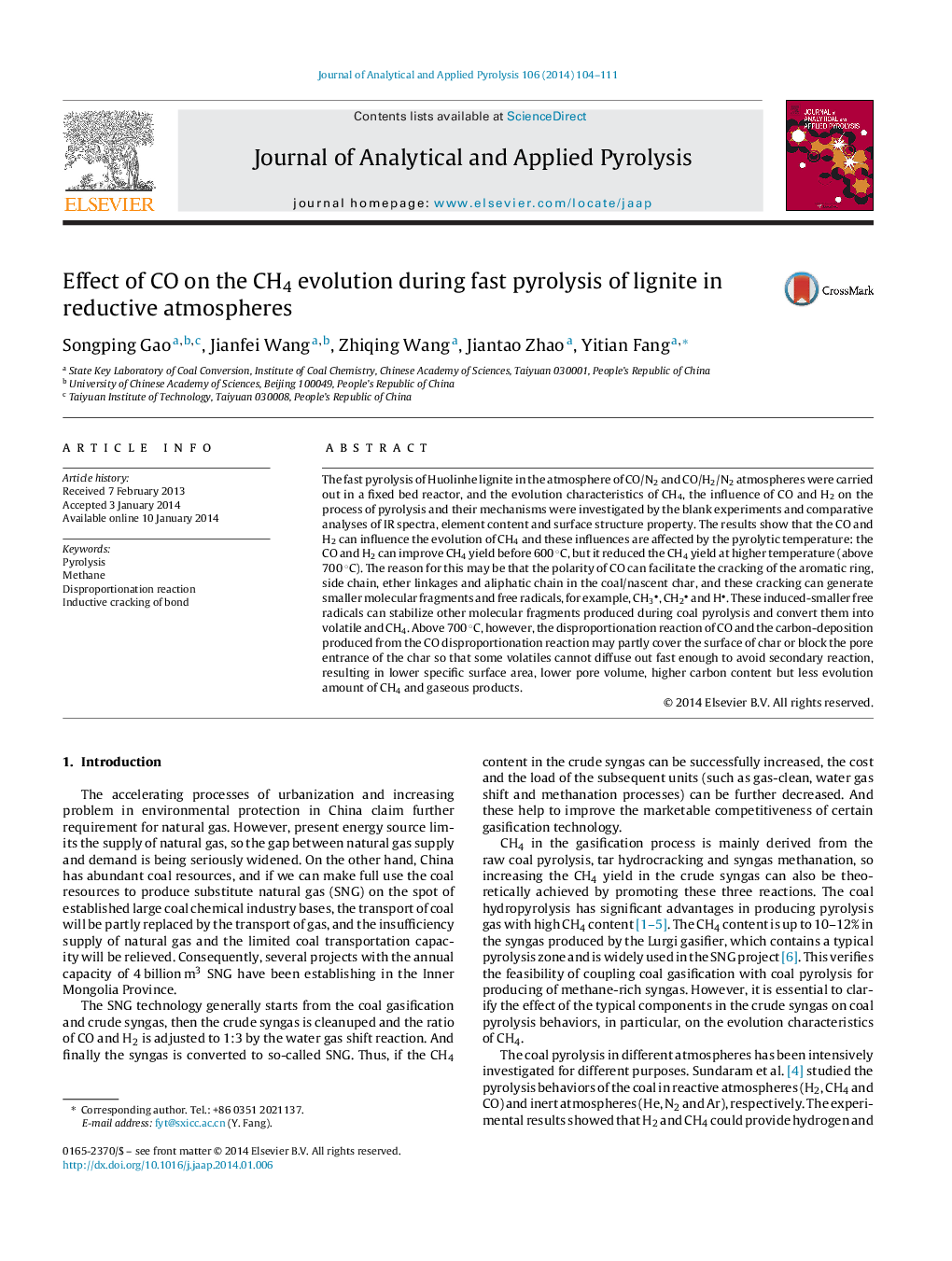| Article ID | Journal | Published Year | Pages | File Type |
|---|---|---|---|---|
| 1196863 | Journal of Analytical and Applied Pyrolysis | 2014 | 8 Pages |
•The CO affects the generation of CH4.•The polarity of CO can facilitate the cracking of chemical bonds in coal/char.•The CO disproportionation reaction contributes the lower CH4 yield.
The fast pyrolysis of Huolinhe lignite in the atmosphere of CO/N2 and CO/H2/N2 atmospheres were carried out in a fixed bed reactor, and the evolution characteristics of CH4, the influence of CO and H2 on the process of pyrolysis and their mechanisms were investigated by the blank experiments and comparative analyses of IR spectra, element content and surface structure property. The results show that the CO and H2 can influence the evolution of CH4 and these influences are affected by the pyrolytic temperature: the CO and H2 can improve CH4 yield before 600 °C, but it reduced the CH4 yield at higher temperature (above 700 °C). The reason for this may be that the polarity of CO can facilitate the cracking of the aromatic ring, side chain, ether linkages and aliphatic chain in the coal/nascent char, and these cracking can generate smaller molecular fragments and free radicals, for example, CH3, CH2 and H. These induced-smaller free radicals can stabilize other molecular fragments produced during coal pyrolysis and convert them into volatile and CH4. Above 700 °C, however, the disproportionation reaction of CO and the carbon-deposition produced from the CO disproportionation reaction may partly cover the surface of char or block the pore entrance of the char so that some volatiles cannot diffuse out fast enough to avoid secondary reaction, resulting in lower specific surface area, lower pore volume, higher carbon content but less evolution amount of CH4 and gaseous products.
